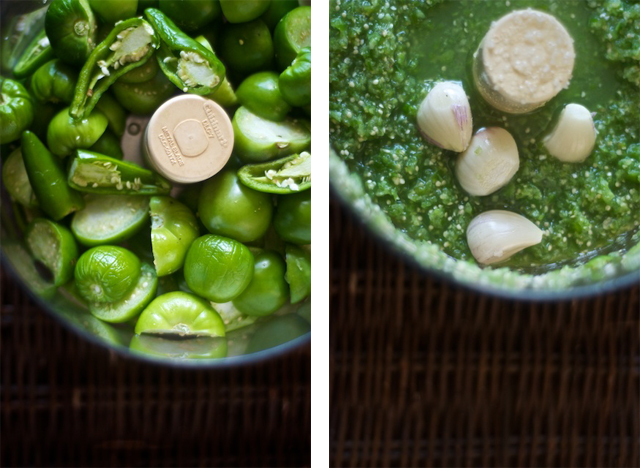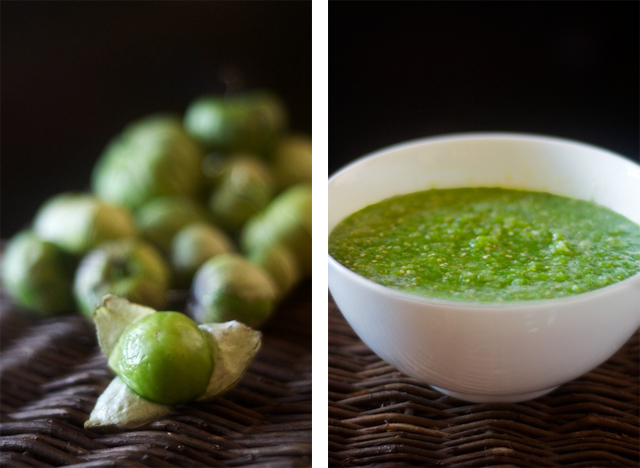Salsa Verde-Fermented
Raw & Naturally Fermented: Salsa Verde


Salsa verde, bright and hot and green, makes its way to our kitchen every August when tomatillos come into their season. No, they don’t grow in our little corner of the community garden – the altitude is too high and the climate too cold, but they arrive in paper bags with our CSA and in baskets at the farmers market my husband and I manage. While lovely roasted, tomatillos are better served fresh and raw where their vibrant acidity contributes a beautiful punch of flavor to a truly good salsa verde recipe.
A good salsa verde recipe should be light and green, both in flavor and appearance, and it’s salsa verde’s very lightness that lends itself so well to summer foods: grilled meats and fish as well as classic Mexican and South American dishes like anticuchos de corazon (that, dearest real food lovers, is coming). So when I’m looking for something bright, fresh and delightfully raw to lighten up the otherwise rich, buttery and slow-cooked dishes I tend to prepare.

Making a Good Salsa Verde Recipe Better: Fermentation
My favorite salsa verde recipe, like most of my favorite recipes, undergoes that traditional and slow practice of fermentation, one that imbues the fresh puree of tomatillos, garlic, jalapenos and serranos with deeper nutrition: beneficial bacteria which then, in their own turn, create an abundance of B vitamins and increase the vitamin C content naturally present in the salsa verde.Fresh whey drawn off after making labneh (yogurt cheese) acts as an excellent inoculant for all fermented foods, but can be particularly helpful for sauces such as salse verde which have a greater chance of going awry than other ferments. While whey works fine in this salsa verde recipe and in other fermented foods, I prefer to use a vegetable starter culture, which you can purchase online, as such starter cultures convey the added benefit of culturing specific beneficial bacteria which offer therapeutic effects on digestive health. While ostensibly more expensive than fresh whey, the therapeutic effects of culturing particular beneficial bacteria, much like the therapeutic effects of a daily dose of fermented cod liver oil (see sources), makes it a worthwhile expense.
Salsa Verde Recipe
tomatillos, jalapenos, serranos, lime
Ingredients:
- 1 lb tomatillos, husked and halved
- 8 to 12 jalapeno or serrano peppers, seeded if desired and chopped
- cloves of 1 medium head of garlic, peeled and crushed
- juice of 1 lime
- 1 tsp unrefined coarse sea salt (see sources)
- 1/2 packet vegetable starter culture (buy it online) dissolved in 1/4 cup warm water or 1/4 cup fresh whey
Method:
- Toss tomatillos, peppers, garlic, lime juice, salt and starter culture or fresh whey into a food processor or blender and process until smooth, adjusting for seasoning as necessary.
- Transfer the sauce to a mason jar or a vegetable fermenter (see sources and allow to ferment at room temperature for three to five days before transferring to cold storage. Serve the salsa verde over grilled chicken or fish or as a garnish for tacos and burritos.
NOTE: Fermentation, I think, makes everything a bit better, deepening the flavors and improving a dish’s nutrient profile, but if you can also skip the fermentation process entirely for this classic salsa verde recipe and, instead, serve it immediately after step #1.

Comments
Post a Comment